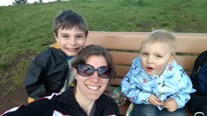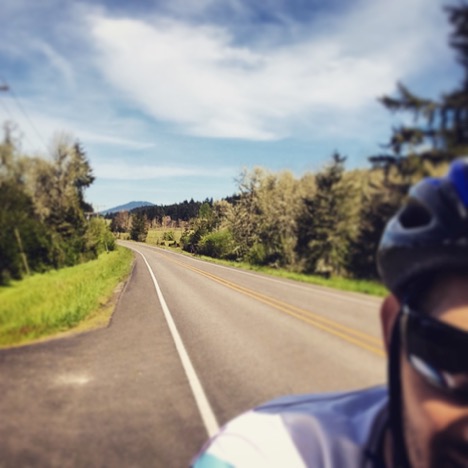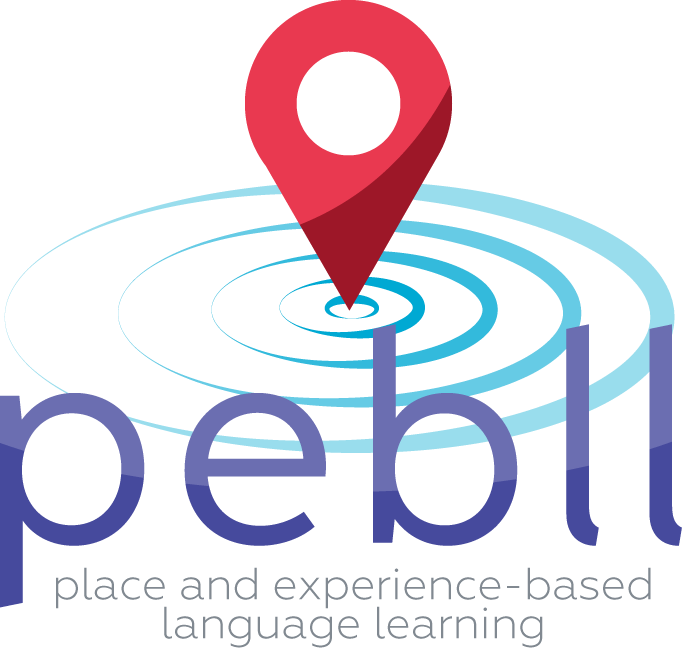Contents
Content Type: 1
Title: More World Cup Resources
Body:
Your InterCom editor hopes that you are enjoying watching the World Cup. Here are more resources for the international tournament, building on last week's resources (http://caslsintercom.uoregon.edu/content/25273):
An introduction in Chinese to ten of the teams in this year's tournament: https://www.thechairmansbao.com/2018-world-cup-in-chinese/
An article in English about why Germany has unique soccer vocabulary rather than borrowings from English: http://www.dw.com/en/why-germany-has-a-unique-football-vocabulary/a-44156996
Eleven facts (in English) about the German World Cup team: https://www.deutschland.de/en/topic/life/football-world-cup-2018-eleven-facts-about-the-german-national-team
A lesson about the World Cup for English learners, from the British Council: https://www.teachingenglish.org.uk/article/world-cup-2018
A short guide to soccer vocabulary in Russian: https://blog.busuu.com/guide-russian-football-vocab/
An article about soccer and European identity: https://daily.jstor.org/soccer-and-european-identity/
Listen to a radio segment in which Andrés Cantor shares the story of his immigration to the United States from Argentina and how he came to be the lead play-by-play soccer announcer for Telemundo: http://latinousa.org/2018/06/13/andrescantor/
A very helpful article for teachers, "9 Ways to Incorporate the World Cup into the WL Class (Even if your year is over)": http://teachinginthetargetlanguage.com/9-ways-to-incorporate-the-world-cup-into-the-wl-class-even-if-your-year-is-over/
World Cup videos curated by Larry Ferlazzo: http://larryferlazzo.edublogs.org/2018/06/14/tons-of-videos-about-the-world-cup/
Perfect for increasing global awareness: the World Cup in 33 maps: https://storymaps.esri.com/stories/2018/world-cup/
A podcast in Spanish about soccer-related and World Cup-related vocabulary: https://www.fundeu.es/blog/las-palabras-del-mundial/
Source: Various
Inputdate: 2018-06-20 09:47:02
Lastmodifieddate: 2018-06-25 04:10:18
Expdate:
Publishdate: 2018-06-25 02:15:01
Displaydate: 2018-06-25 00:00:00
Active: 1
Emailed: 1
Isarchived: 0
Content Type: 1
Title: Podcasts about Language and Linguistics
Body:
From https://www.superlinguo.com
Here is a long annotated list of podcasts about linguistics, language, and (in a few cases) languages: https://www.superlinguo.com/post/158448074588/linguistics-and-language-podcasts
Source: Superlinguo
Inputdate: 2018-06-20 09:47:36
Lastmodifieddate: 2018-06-25 04:10:18
Expdate:
Publishdate: 2018-06-25 02:15:01
Displaydate: 2018-06-25 00:00:00
Active: 1
Emailed: 1
Isarchived: 0
Content Type: 4
Title: Exploring Cultural Frames: Mapping Mental Models
Body:
By Christopher Daradics, CASLS Language Technician
This activity illustrates how cultural frames and mental models shape our awareness and understanding of the world around us. By comparing insider and outsider interpretations of a cultural artifact, students will have the opportunity to encounter and reflect on the way that cultural affiliation and exposure shapes their point of view and interpretation of the world.
Objectives:
- Students will be able to identify how a cultural artifact relates to everyday life, personal experience, and cultural norms.
- Students will be able to explain how a cultural artifact relates to various cultural perspectives.
- Students will be able to discuss or illustrate how cultural frames shape how they see and interpret the world.
Mode: Interculturality
Materials needed:
- A culturally significant artifact from the target culture. Ideally students will be presented with an object whose function is difficult to discern. In other words, pick an artifact your students will have a difficult time imagining in use within the target culture.
- The attached worksheet.
Procedure:
- Have students read through the worksheet and/or explain the activity.
- Present students with your chosen mysterious cultural artifact.
- In Column A students record their own interpretation of the artifact.
- In Column B students record a cultural informant’s perspective on the artifact.
- Students (or instructor) choose one of the follow-up extension activities.
Source: CASLS Activity of the Week
Inputdate: 2018-06-26 10:09:43
Lastmodifieddate: 2018-08-06 03:53:37
Expdate:
Publishdate: 2018-08-06 02:15:01
Displaydate: 2018-08-06 00:00:00
Active: 1
Emailed: 1
Isarchived: 0
Content Type: 5
Title: What We Do for Fun
Body:
Teachers need to take care of themselves and set boundaries between their careers and personal lives so that they can be physically and mentally fresh to bring positive energy into their teaching. Here's how CASLS staff enjoy our time outside of work.
 Julie Sykes, Director: "I love to travel and find new stomping grounds around Oregon and beyond. I especially like exploring great new eating spots. I am always on the hunt for local places with amazing flavors and a welcoming atmosphere."
Julie Sykes, Director: "I love to travel and find new stomping grounds around Oregon and beyond. I especially like exploring great new eating spots. I am always on the hunt for local places with amazing flavors and a welcoming atmosphere."
Linda Forrest, Research Director: "I love to spend time researching genealogical questions (mine or other people’s). This involves lots of time searching online databases, analyzing spreadsheets of DNA data, investigating materials in libraries, or the very best thing, traveling to archives to actually hold original documents from long ago."
Li-Hsien Yang, East Asia Programs Director: "I enjoy searching for new outing spots to hang out with my friends and family. I also love trying to cook different food and desserts."

Mandy Gettler, Associate Director: "I regularly practice yoga to help relax my mind, stretch my body, and ultimately maintain my sanity! I also enjoy spending time outdoors hiking with my children, who are eight and three. We're so fortunate to live in Eugene, where there are many close outdoor spots to explore. I'm attaching a picture here of us at the top of Mt. Pisgah in Eugene."
Linda Ellis, Business and Financial Development Coordinator: "My husband and I have owned a new, used, and antiquarian bookstore since 1975. I enjoy researching the historical context and value of rare books. I also love to read and do the New York Time crossword puzzle, which gives me many an opportunity to provide a lap for my miniature golden doodle, another of my great enthusiasms."
Lindsay Marean, InterCom Editor: "I'm at my best when I get to spend plenty of time playing outside. I love boating local rivers, exploring the mountains and the coast, and running our local trails and special spots right here in Eugene."
 Christopher Daradics, Language Technician: "I am at my best when my body and mind are in balance. To get them in sync I like to take photos, ride my bike, work on my house, and hang out with friends. Here’s a photo I took while riding my bike."
Christopher Daradics, Language Technician: "I am at my best when my body and mind are in balance. To get them in sync I like to take photos, ride my bike, work on my house, and hang out with friends. Here’s a photo I took while riding my bike."
Stephanie Knight, Assistant Director: "For fun, I love spending time exploring the outdoors with my family. We all agree that hikes in the rain are the best hikes! I also love to play games that involve word puzzles and a lot of strategy. As such, escape games are my new favorite obsession. Finally, I love cultural festivals. I'm always on the hunt for a new one!"
Kim Larsen, Office Specialist: "Fun to me is laughing with my children. Time at the ocean. Making things. A hike in the forest. Paddling on a lake. Eating outside. Planting a garden. Exploring a new destination. And I find it's impossible to be unhappy while dancing or trampolining."
Source: CASLS Spotlight
Inputdate: 2018-06-26 11:28:07
Lastmodifieddate: 2018-07-02 03:53:42
Expdate:
Publishdate: 2018-07-02 02:15:03
Displaydate: 2018-07-02 00:00:00
Active: 1
Emailed: 1
Isarchived: 0
Content Type: 4
Title: Setting Free-Time Goals
Body:
This activity of the week is designed to help teachers maintain balance through dedicating time to doing things that bring them comfort, happiness, and/or joy. Thank you, teachers, for your hard work. Time to treat yourselves!
Objectives: Teachers will be able to:
- Identify three activities to do for fun
- Articulate a plan for participating in the activities
Procedure:
- Brainstorm free time activities that bring you comfort, peace, happiness, and/or joy. These activities could be simple like meditating, or more complicated, like traveling abroad.
- Identify three activities that you want to be sure you complete within the next school year.
- For each activity, budget the cost and verify that it fits within your economic situation. If it doesn’t, either decide on a different activity or decide on a plan for saving the money that you need.
- Next, budget the time allocation needed for each activity. Again, if it doesn’t fit within your current schedule, either pick a new activity or create a new schedule in which it fits.
- Identify the date by which activity will be achieved. Some activities, like taking a dance or yoga classes, will be ongoing, while others, like taking a trip will have a concrete date.
- Prioritize and experience your activities! Don’t forget to document the good times you will have so that you can encourage yourself to stick with them when teaching becomes overwhelming.
Source: CASLS Activity of the Week
Inputdate: 2018-06-26 11:33:50
Lastmodifieddate: 2018-07-09 03:55:17
Expdate:
Publishdate: 2018-07-09 02:15:01
Displaydate: 2018-07-09 00:00:00
Active: 1
Emailed: 1
Isarchived: 0
Content Type: 5
Title: New Tool on PEBLL
Body:
 The Center for Applied Second Language Studies (CASLS) is excited to announce a new resource for educators and researchers interested in place and experience-based language learning. This resource, a tool for evaluating learning experiences that employ this approach to language learning, is available for free on PEBLL at https://pebll.uoregon.edu/documents/PEBLL-EvaluationTool-v4-06-03-2017.pdf.
The Center for Applied Second Language Studies (CASLS) is excited to announce a new resource for educators and researchers interested in place and experience-based language learning. This resource, a tool for evaluating learning experiences that employ this approach to language learning, is available for free on PEBLL at https://pebll.uoregon.edu/documents/PEBLL-EvaluationTool-v4-06-03-2017.pdf.
Educators and researchers who access the tool will be able to read about five central criteria for evaluating all place-based language learning experiences: interactivity, contextuality, engagement, cognitive challenge, and technological affordances. Each criterion is defined and explained through a summary of relevant, contemporary research.
We hope that you will download the tool and use it to evaluate some of the curated place-based language learning experiences that are available to educators on the site. Happy exploring!
Source: CASLS Spotlight
Inputdate: 2018-06-26 11:41:10
Lastmodifieddate: 2018-07-30 03:57:41
Expdate:
Publishdate: 2018-07-30 02:15:01
Displaydate: 2018-07-30 00:00:00
Active: 1
Emailed: 1
Isarchived: 0
Content Type: 5
Title: LingroFolio: Coming Soon!
Body:
 The Center for Applied Second Language Studies (CASLS) is excited to announce the upcoming release of LingroFolio, a socially-networked e-Portfolio that accompanies Contraseña: Your Password to Foundational Spanish (http://lingrolearning.com/contrasena/). Contraseña is an immersive, mobile language-learning program published by LingroLearning that will be available for the first time this coming fall.
The Center for Applied Second Language Studies (CASLS) is excited to announce the upcoming release of LingroFolio, a socially-networked e-Portfolio that accompanies Contraseña: Your Password to Foundational Spanish (http://lingrolearning.com/contrasena/). Contraseña is an immersive, mobile language-learning program published by LingroLearning that will be available for the first time this coming fall.
Contraseña and LingroFolio propel students towards the classroom of the future. Not only do communicative projects detailed in Contraseña prime student learning, but they also serve as evidence that learning has occurred. Students use LingroFolio to create, share, and comment on each other’s multimedia projects as they progress through the program. Their comment threads inform further reflection, engaging students in a meaningful and intentional reflective learning process. Excitingly, these comments can also inform teaching practices. They are viewable by teachers, and the analytic features of LingroFolio make them easy to synthesize and analyze.
LingroFolio is language learning software designed for digitally native students and teachers. CASLS is excited for its debut and to continue its work with partners that positively transform language learning and teaching.
Source: CASLS Spotlight
Inputdate: 2018-06-27 16:56:58
Lastmodifieddate: 2018-07-23 03:54:47
Expdate:
Publishdate: 2018-07-23 02:15:01
Displaydate: 2018-07-23 00:00:00
Active: 1
Emailed: 1
Isarchived: 0
Content Type: 3
Title: Using Digital Resources to Improve Pronunciation and Intercultural Competence
Body:
By Zach Patrick-Riley, CASLS Fellow
A goal of many language educators is to be aware of the uniqueness of each student and their reasons for learning the language. Yet this goal is often difficult to achieve because of teachers’ workload and students’ varied interests. One of the best ways to account for this variation is to use technology as a supplementary tool that considers the proficiency level and the background of your learners. Digital resources can be used for targeting all skills, but this topic focuses on pronunciation.
As ESL/EFL teacher, I am personally attuned to technological resources for improving English pronunciation; however, the same principles can be applied to any language teaching context. Two resources that are user-friendly and scaffold learners’ individual interests are YouGlish and VoiceTube. These sorts of tools are valuable because they provide pronunciation practice in contextualized videos. Such authenticity provides the opportunity for learners to develop their linguistic ability and socio-cultural awareness (knowledge of social and cultural customs in a given context) at the same time. For example, in terms of linguistic ability, learners strengthen their receptive skills by training their ears to distinguish the individual sounds in words (segmental pronunciation) and features such as tone and stress that apply over syllables, words, and longer stretches of discourse (suprasegmental pronunciation). They subsequently enhance their ability to produce segmental and suprasegmental features through this awareness and by repeating after the audio. For sociocultural awareness, often the videos on these websites were not artificially created videos for language learning, but instead include discourse that more closely represents a real life cultural context: examples include TV shows, TED Talks, music, etc. (Jin, 2017; Karaty, 2017). Learners are thus exposed to and better understand communicative practices and cultural customs in a target discourse community.
In YouGlish (https://youglish.com/), learners type in a word or topic and the tool provides qualityYouTube videos where that word occurs. When facilitating learner agency, learners should type in topics that they find most relevant personally or professionally. For instance, if the learner wants to be a marine biologist, they can type in marine biology. Or if they love soccer, the can type in a soccer team like Real Madrid. Or if they are doing a unit about sustainability, they can type in words like recycling, solar panels, renewable energy, and so on.

VoiceTube (https://www.voicetube.com/) encourages student choice as well with different video channels such as Business, Kids Channel, BBC Learning English, IELTS and TOEFL test prep, TV shows, and more. When listening to VoiceTube, words the speaker in the video says are broken down clearly for the listener, making it easy to follow along and repeat the word or phrase. For example, as seen on the image on the right, the video is giving the learner explicit instruction on how to listen for and produce sarcasm.
© REDIdea Co., Ltd.
Other online sources are beneficial for pronunciation as well. For example, chances are your learners are already watching streaming services like Netflix for fun, so it would benefit them to be taught how to listen to the pronunciation patterns in the video. They could pay attention to the speakers’ intonation and how it connects to the socio-cultural situation in the video. For instance, building off the sarcasm example, they could have a thinking routine of, “Was that person being sarcastic? How do I know? Do people often use sarcasm in ___ (fill in location)?” Such attention develops their awareness of how intonation and meaning are interconnected. The good thing about Netflix and YouTube is that each tool incorporates videos from many languages and countries.
As always should be the case with online learning, learners benefit when reflectively engaging and using these tools in their own meaningful way. The eventual goal is learners begin digital resources in their free time because they enjoy interacting with the tools and find the content relevant to their lives. By scaffolding strategic use of technology, teachers can empower learners towards their academic, professional, and personal goals. By focusing on pronunciation within the context of natural speech, learners are exposed to a broader range of authentic sociocultural situations and scenarios. Through exposure and mindful engagement, learners become more interculturally, pragmatically, and phonetically competent - not to mention have fun all the while.
References:
Jin, H. (2017). VoiceTube (Review). In M. O’Brien & J. Levis (Eds). Proceedings of the 8th Pronunciation in Second Language Learning and Teaching Conference, ISSN 2380-9566, Calgary, AB, August 2016 (pp. 248-253). Ames,IA: Iowa State University.
Karatay, Y. (2017). YouGlish.com (Review). In M. O’Brien & J. Levis (Eds). Proceedings of the 8th Pronunciation in Second Language Learning and Teaching Conference, ISSN 2380-9566, Calgary, AB, August 2016 (pp. 254-259). Ames, IA: Iowa State University.
VoiceTube image © REDIdea Co., Ltd. (2018) What They Really Mean: Sarcasm. Image screenshot taken and retrieved from the video at https://www.voicetube.com/videos/64840?ref=bbc
Additional resources for improving pronunciation:
Spanish: LingroToGo http://lingrolearning.com/
Chinese: Tone Perfect https://tone.lib.msu.edu/, https://www.hackingchinese.com/24-great-resources-for-improving-your-mandarin-pronunciation/
French: https://www.talkinfrench.com/french-pronunciation-guide/
English: English Central https://www.englishcentral.com/videos
Source: CASLS Topic of the Week
Inputdate: 2018-06-28 09:33:07
Lastmodifieddate: 2018-08-27 04:01:51
Expdate:
Publishdate: 2018-08-27 02:15:01
Displaydate: 2018-08-27 00:00:00
Active: 1
Emailed: 1
Isarchived: 0
Content Type: 4
Title: Self-directed Video Watching
Body:
By Zach Patrick-Riley, CASLS Fellow
The primary goal of this activity is to motivate students to watch video clips of the target language outside the classroom and encourage self-directed learning. By learning strategies on how to mindfully engage with videos found on websites like Netflix and YouTube, students will develop their ability to improve their pronunciation and analyze the language they hear in contextualized videos more autonomously. This activity is intended for students with intermediate proficiency and higher on the ACTFL proficiency guidelines.
Objective: Students will be able to practice a variety of speaking and listening strategies including activing background knowledge, paying attention to target content words, connecting intonation with meaning, and using visual cues to support auditory comprehension.
Mode: Interpretive
Materials needed: Device with access to YouTube and/or Netflix, Handout: Self-directed video watching
Procedure:
1. In pairs, students discuss:
- How often do you listen/watch videos of speakers in _____ outside of class? (put target language in the blank)
2. In pairs, students discuss:
- How can videos on websites like Netflix and YouTube help you develop your listening and speaking/pronunciation?
- What are some strategies for helping you understand the content when it goes fast?
- Do you ever watch Netflix with audio or subtitles in the language you are learning?
3. Elicit students’ ideas from the questions in Steps 1 and 2. Then, inform them that they are going to practice four listening and speaking strategies today: activating background knowledge, paying attention to target content words, connecting intonation with meaning, and using visual cues to support auditory comprehension. *As an optional addition to this stage you can show a one-minute video on the mobile application LingroToGo. The video is about listening to online media such as music and TV with a purpose. You can ask students the question: What does Brian change about the way he listens to online media? The video can be found at LingroToGo>Health and Safety>Exercise>Listening Actively to learn>Inventing a friend to exercise>Listening with a purpose.
4. Show a clip on either Netflix or YouTube appropriate for your context (language and level). The clip should be reasonably short (1-2 minutes) so that students may watch it a couple times. Ideally, the clip relates to the theme of the current unit you are studying. Students receive Handout: Self-directed video watching and fill in their responses for the following steps.
- Pre-watching prediction: Before watching, students activate their background knowledge of the topic of the clip by predicting what they will see in the clip.
- 1st time watching: Show the clip without subtitles. Students pay attention to the visuals in the clip including body language and background.
- 2nd time watching: Students write down content words they hear. Students pay attention to the speakers’ intonation and how it’s connected to meaning/the situation.
- Post-watching reflection: Students discuss what they found helpful and difficult while watching. Using the notes from the categories, students discuss anything interesting they noticed about intonation, body language, and content of language.
5. Next, lead a class discussion about the students’ experiences and if and if/how any of the four strategies helped them while watching.
6. Students receive another copy of Handout: Self-directed video watching. As additional practice at home, students watch a video clip in the target language on Netflix or YouTube using the handout as a guide. While watching, they pay attention to the same characteristics as they did during class. They should be prepared to share their experience the following class periods. Depending on context, students can either choose what show/film to watch or they can be asked to watch a specific video clip that relates to the topic of the unit. The length of the video for homework can also be specified to fit your context.
Notes/Modifications:
- If your target language is English, you can consider using VoiceTube or YouGlish which were discussed in this week’s Topic of the Week. For example, students could be asked to watch a clip about sarcasm in English found on VoiceTube at https://www.voicetube.com/videos/64840?ref=bbc
Source: CASLS Activity of the Week
Inputdate: 2018-06-28 09:56:40
Lastmodifieddate: 2018-08-27 04:01:51
Expdate:
Publishdate: 2018-08-27 02:15:01
Displaydate: 2018-08-27 00:00:00
Active: 1
Emailed: 1
Isarchived: 0
Content Type: 3
Title: Setting Boundaries and Thriving
Body:
By Stephanie Knight, CASLS Assistant Director
Dear Stephanie,
Robert* told me about something in class today that needs your immediate attention. Please call me at (555)-555-5555 as soon as you get this.
Sincerely,
Frank Johnson
I stared at the email as tears filled my eyes. I was depleted. My 13-hour day of teaching, meetings, parent phone calls, grading, and planning hadn’t been enough. A student was so upset that his father needed me to respond immediately. I picked up the phone to make the call. My one-year-old son started crying from his crib. My husband came home from a long day of work. I ignored both of them. I had to call. I had to see what happened with my student.
Mr. Johnson answered and said something like, “Oh! Hello, Stephanie. I am so glad you called. I just wanted to tell you that Robert says you are a wonderful teacher. I worded my email so harshly because I knew you would call as soon as you saw it, and I thought it would brighten your day.” I hung up the phone firmly submerged in mixed emotions. I was relieved that everything was going well for my student. I was grateful that his father wanted me to know I was doing well. I was angry at the email intended to frighten me into working even more for the day. I was angry with myself because I chose to ignore my family to respond to an email that absolutely could have waited until the next day.
Thankfully, that email was a turning point for me. I awoke the next morning resolved to take back my life. I had to set boundaries. Without those boundaries, I wouldn’t be able to be a mom, friend, or wife. I wouldn’t even be able to be a teacher. I was too poured out to be able to pour into anyone.
Slowly, I learned to embrace boundaries for my life. To start, I set aside two days a week during the summer for intensive planning and resource creation so that nights and weekends during the school year would become less arduous. Next, I stopped answering work emails after 5:00 p.m. Finally, I protected Saturdays for family time. In essence, I empowered myself to control my life instead of chasing some illusive notion of teaching perfection. And because I had more rest, I was a better for it. My family benefited, but so did my students. I learned to see boundaries for what they were-essential tools for achieving excellence.
*Names have been changed
Source: CASLS Topic of the Week
Inputdate: 2018-06-28 13:06:01
Lastmodifieddate: 2018-07-16 03:53:49
Expdate:
Publishdate: 2018-07-16 02:15:01
Displaydate: 2018-07-16 00:00:00
Active: 1
Emailed: 1
Isarchived: 0
